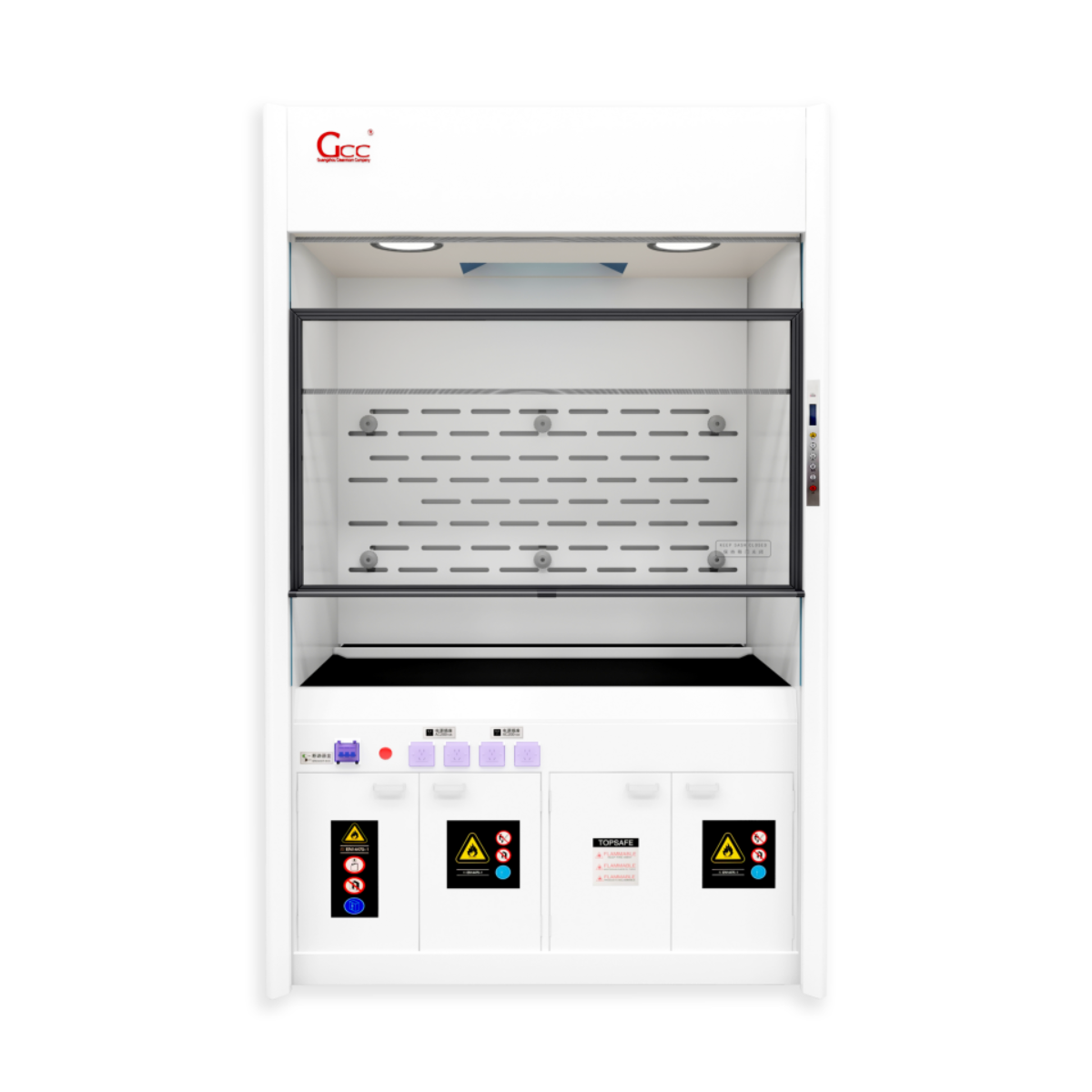Learn how fume hoods actively protect personnel, specimens, and environments in pathology laboratories.
This guide explains how fume hoods operate, illustrates their essential roles in pathology workflows, and provides clear maintenance protocols to help laboratories achieve full compliance with GMP and ISO 14644 standards.

I. Definition and Overview
A fume hood (also called a fume cupboard or extraction hood) actively controls hazardous or toxic fumes, vapors, gases, and particulate matter. In pathology laboratories, it functions as an enclosed, ventilated workspace that protects personnel from bioaerosols, chemical vapors (such as formaldehyde, xylene, and toluene), and other hazardous agents during specimen processing, staining, and dissection.
By creating a controlled environment, fume hoods allow laboratory professionals to handle dangerous materials safely while maintaining specimen integrity.
II. Working Principle
Fume hoods operate on the principle of containment through airflow. They actively create a negative pressure environment to capture and remove harmful substances:
- A powerful blower or exhaust fan creates negative pressure inside the hood enclosure.
- Room air flows inward through the open face aperture, crossing the work surface.
- This inward airflow, known as face velocity, actively captures hazardous contaminants generated during laboratory procedures.
- The system then either:
- Ducts and exhausts the contaminated air outside the building after treatment, or
- Filters and recirculates it using HEPA/ULPA and chemical adsorption filters before returning it to the laboratory (common in ductless hoods).
By maintaining steady airflow, fume hoods actively contain hazardous materials and protect both personnel and the environment.
III. Primary Functions and Roles
Fume hoods in pathology laboratories deliver multiple critical protections:
- Protect Personnel — create a barrier that prevents laboratory workers from inhaling toxic fumes and aerosols.
- Protect Products — maintain sterile conditions to safeguard specimens and ensure accurate diagnostics.
- Protect the Environment — capture and filter hazardous substances before air release.
- Contain Spills — confine accidental chemical or biological spills within the hood.
IV. Structural Characteristics and Materials
Manufacturers actively design modern pathology fume hoods to ensure durability, safety, and ease of cleaning:
- Interior Lining & Work Surface — use stainless steel (grades 304 or 316), epoxy resin, or phenolic resin to provide non-porous, chemically inert, and easy-to-clean surfaces.
- Sash — movable transparent panels made from safety glass or polycarbonate that actively maintain containment while allowing access.
- Baffles — adjustable plates that direct airflow for consistent containment efficiency.
- Airfoil Sill — shaped to minimize turbulence and enhance laminar airflow.
- Work Surface — may include sinks and service fixtures for operational convenience.
V. Classification and Technical Parameters
Pathology laboratories actively choose fume hoods based on operational needs. They select between ducted (constant air volume or variable air volume) and ductless (recirculating) types. Key parameters that laboratories consider include:
| Parameter | Typical Specification/Value |
|---|---|
| Face Velocity | 80–120 FPM (0.4–0.6 m/s) |
| Airflow Volume | 600–1500 CFM |
| Power Consumption | 100–500W+ |
| Filtration | HEPA (H14), ULPA (U15), Activated Carbon Filters |
| Noise Level | <65 dBA |
| Width | 48″, 60″, 72″, 96″ (custom sizes available) |
| Depth | 30″–36″ |
| Height | 40″–50″ |
By carefully selecting these parameters, laboratories ensure optimal containment and operational efficiency.
VI. Typical Application Industries
Fume hoods actively support diverse fields:
- Healthcare & Medical — hospital pathology, histology, cytology, microbiology labs, pharmaceutical research labs.
- Life Sciences & Biotechnology — research in cell cultures, genetics, and bioengineering.
- Industrial Chemistry — R&D and quality control laboratories.
- Forensics — crime labs processing biological and chemical evidence.
- Academic & Government Research Institutes.
VII. Installation and Usage Considerations
Laboratories must actively follow proper installation and operational protocols to ensure safety and compliance:
- Choose the right location — away from high-traffic areas, doors, and air vents to maintain proper airflow.
- Certify the hood — perform initial and periodic performance tests (ASHRAE 110), and recertify annually.
- Balance air — adjust HVAC systems to supply adequate makeup air.
- Train users — ensure staff work within the sash opening, maintain proper sash height, and avoid rapid movements that disrupt airflow.
- Follow cleanroom standards — treat the fume hood as a localized clean zone, meeting GMP and ISO 14644 requirements.
VIII. Maintenance and Care Recommendations
Laboratories should actively maintain fume hoods to ensure safety and efficiency:
- Daily — disinfect surfaces, check for damage, and allow the hood to purge contaminants.
- Weekly/Monthly — clean sash tracks, inspect surfaces, and test alarms.
- Replace filters — follow manufacturer guidelines and replace HEPA/ULPA and activated carbon filters when indicated.
- Annual certification — perform full performance testing, calibrate sensors, and document results.
By implementing proactive maintenance, laboratories extend hood life, maintain containment performance, and ensure compliance.
Conclusion
Fume hoods actively form the backbone of safety in pathology laboratories. GCC Pathology delivers high-performance fume hood solutions that empower laboratories to work safely and efficiently. By adhering to proper installation, operational, and maintenance protocols, laboratories ensure optimal protection for personnel, specimens, and the environment.
Enhance Your Pathology Laboratory with Trusted Equipment & Solutions
GCC Pathology delivers advanced pathology instruments, integrated solutions, and expert support tailored to your lab’s needs.
Ensure precision, safety, and efficiency with our world-class products and services.
Contact Us Today to discuss your project.